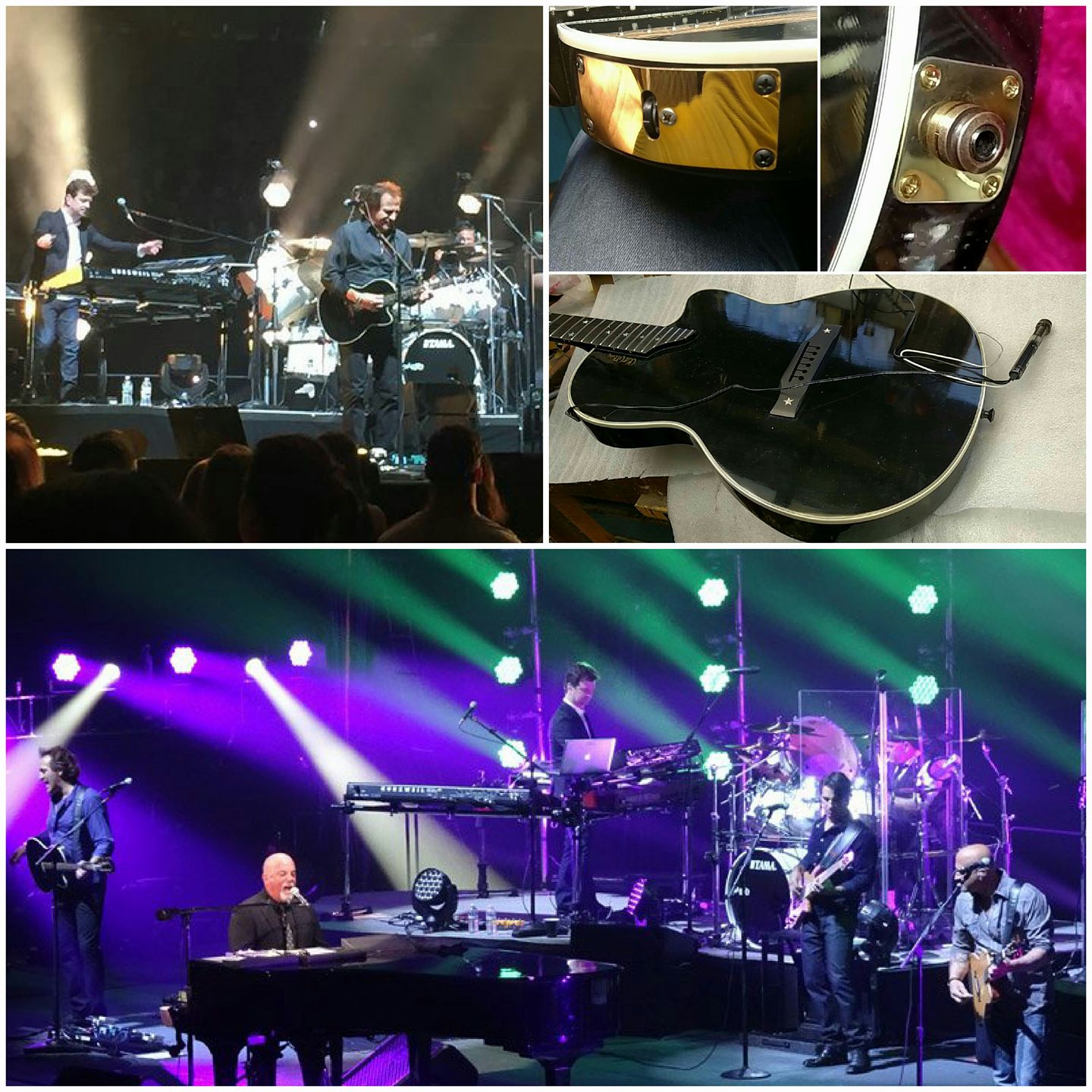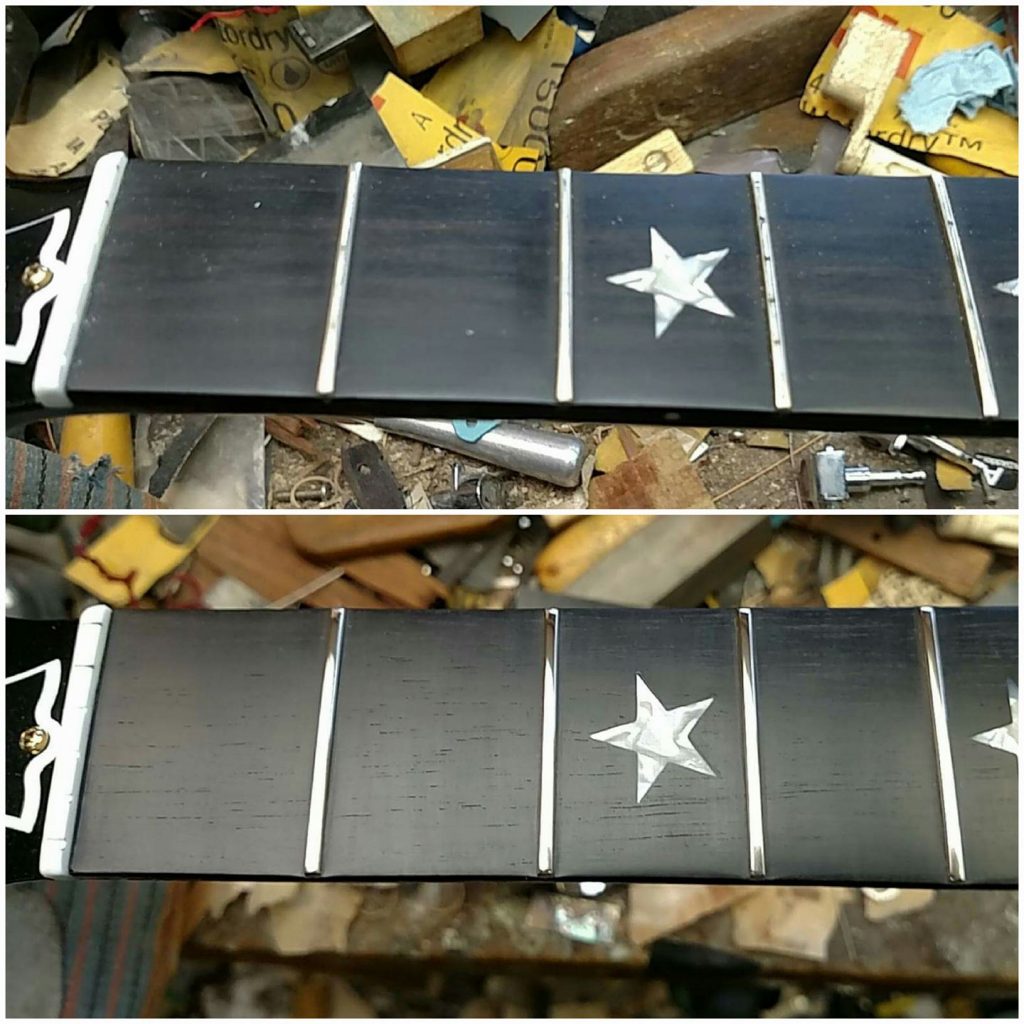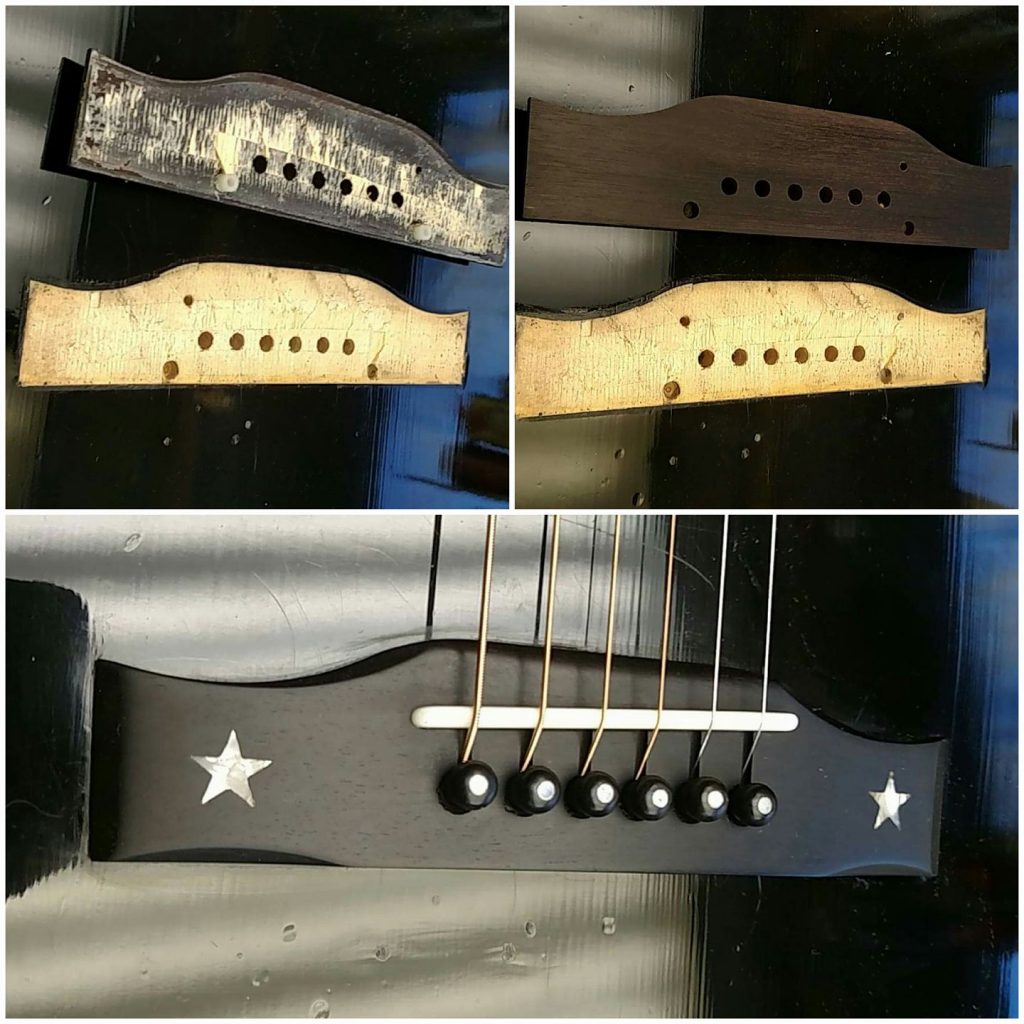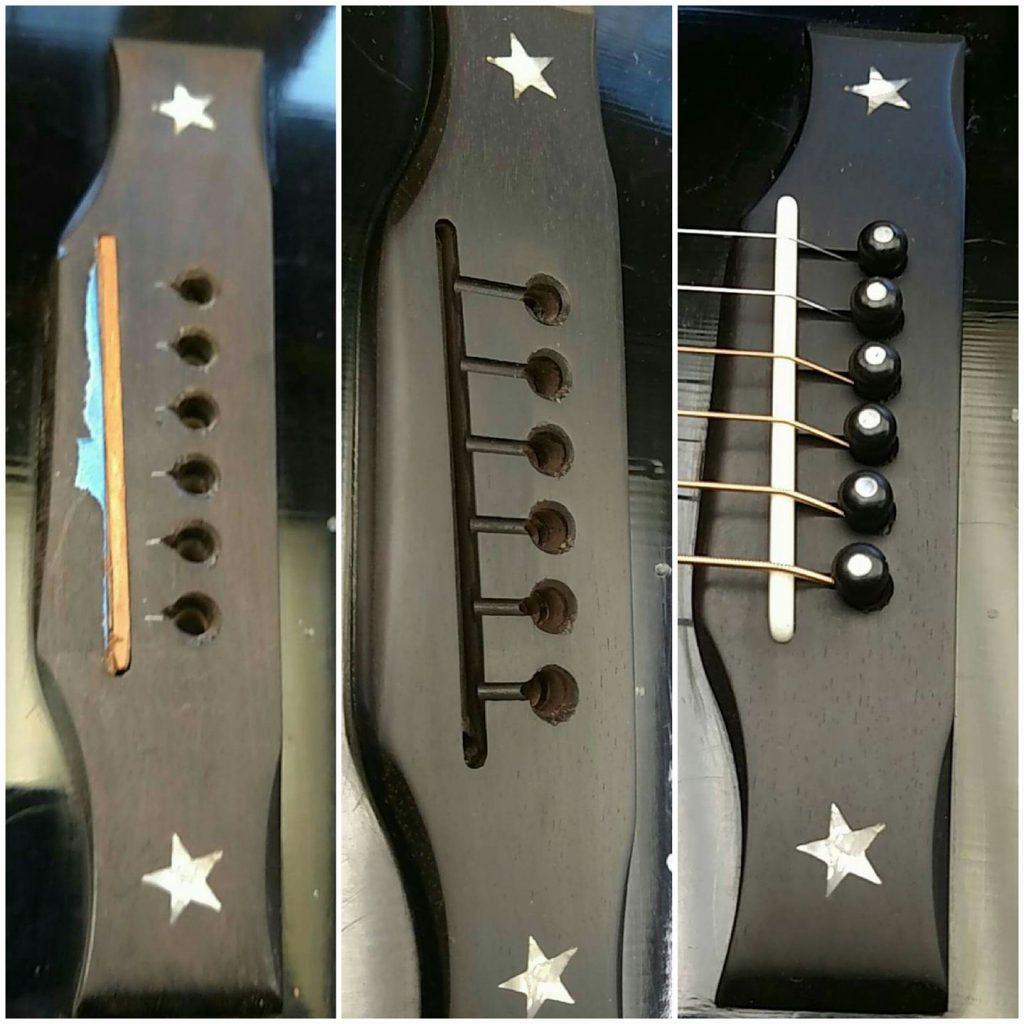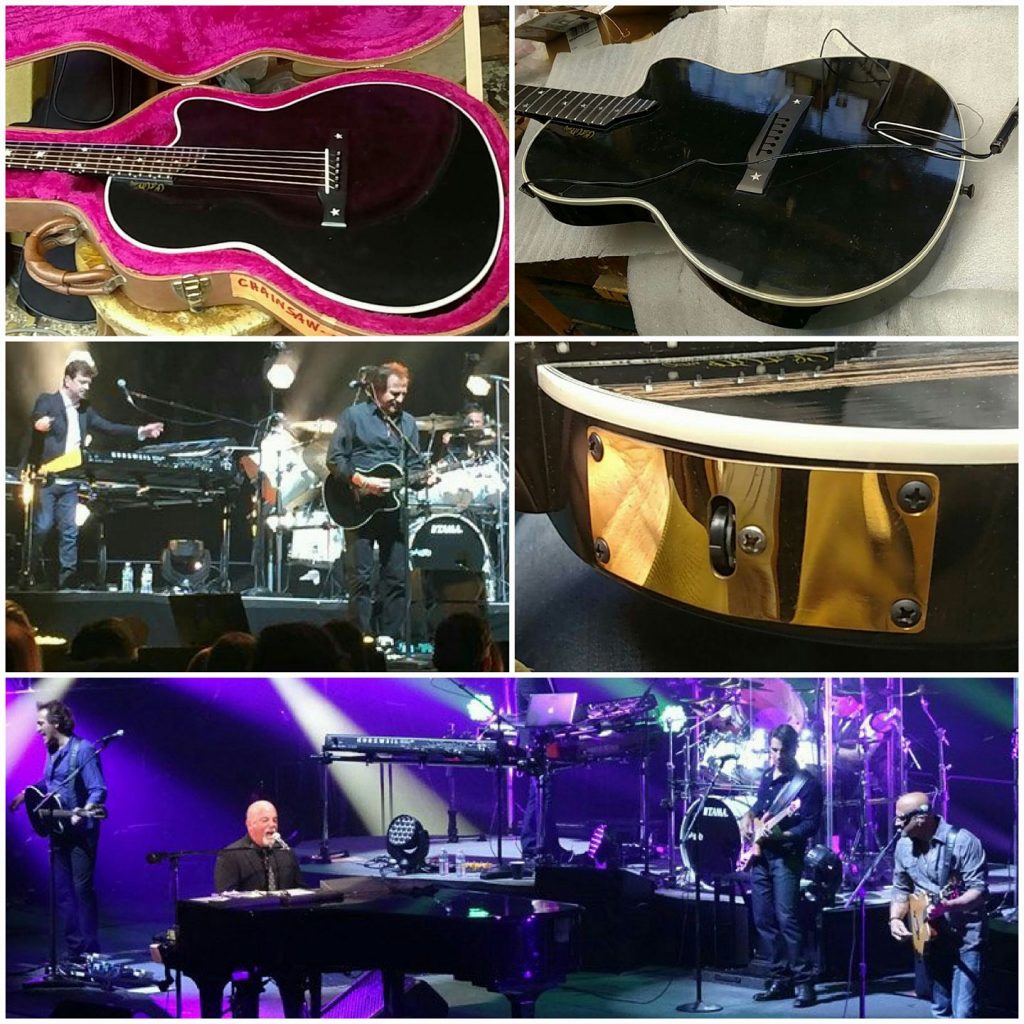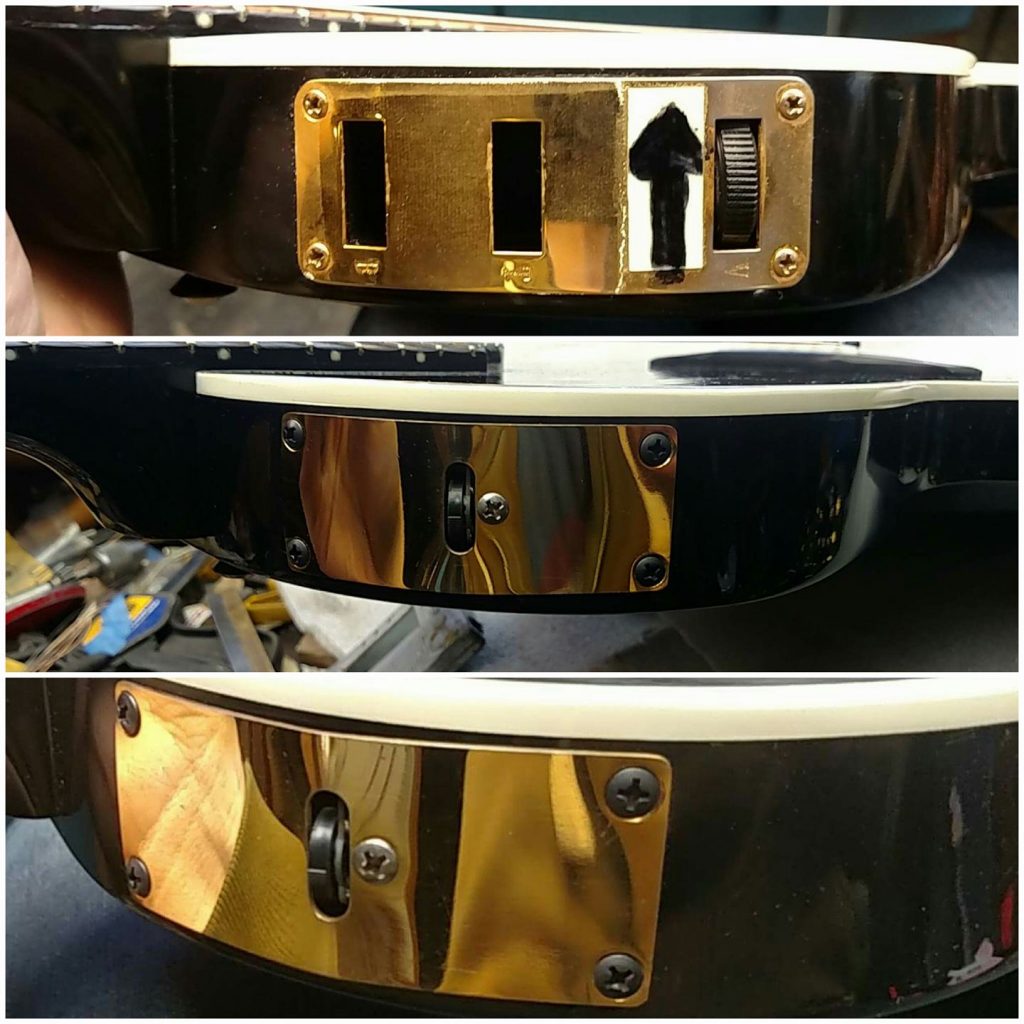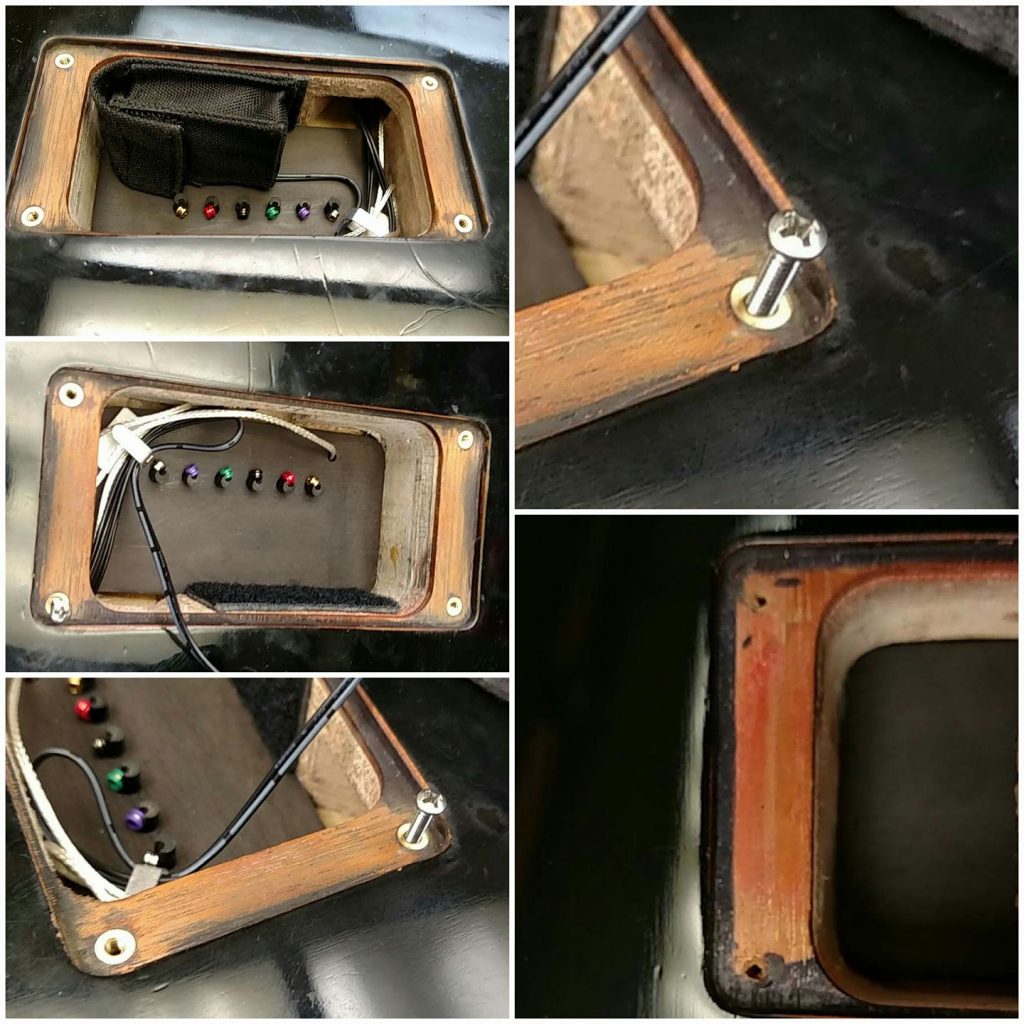I had to get this black Gibson Chet Atkins guitar done for the Billy Joel show last Thursday at Madison Square Garden in New York. This guitar is used on Billy’s song The Entertainer. I did two weeks work in two days. I was at the mercy of the glue drying on the bridge and bridge plate before all the rest of the work was done. It came out great and was used the night of the show. Special thanks to Ricky “Chainsaw” LaPointe, long time tech for Billy Joel, Bruce Springsteen and the E Street Band, and Jackson Browne to name a few. 1) Removed ebony bridge without any finish fractures. Level bottom of the bridge to make full contact with the soundboard flush. 2) The original bridge plate was maple. I wanted to reinforce the amount of string tension from the string ball pull area. The ebony bridge plate stops the string balls from wearing through and allows the soundboard to stiffen up to keep the top from distorting over time from string tension. The back opening cavity has four screws that allow access to the 9 volt battery pack. The battery has to be changed every show to make sure it doesn’t fail or cut out the system. To make it easy to change I inlaid the same brass inserts with stainless steel screws that my Dad (Dr. Phil Petillo) made. These same style brass inserts were used on Bruce Springsteen’s old Esquire my Dad sold and modded for Bruce so long ago and on Nils Lofgren’s Fender Stratocasters. 3) New compensated saddle made of petrified Woolly Mammoth Tusk. 4) Bridge relief lines milled in front of the string hole to relieve the string and allow the string break angle to give full pressure forcing down on the saddle to get the pickup element underneath balanced through the sound system. 5) Hand lathed Nigerian ebony bridge pins with mother of pearl dot inlays. 6) Micropolished the frets removing the string coil dents in the frets. I leveled the frets, taking off a business card worth of thickness off the tops of the frets to get the string dents out, then I reshaped the frets to their original state and micropolished them. My father Dr. Phil Petillo invented a process of micropolishing that is used with his patented Petillo Precision Frets aka “triangle/pyramid frets” and I apply this process to every setup I do. The procedure involves the frets being polished from 400 grit sand paper all the way up to 10,000 grit lens paper (which polishes telescope lenses). The entire idea is to make the surface area so glass-like the metal string can resonate a clear true note with intonation clarity. I always use the example of the wine glass filled with liquid and the player rubs the rim…and the friction of that motion makes a note. You can imagine if the rim was rough, it would not be as reflective to carry the note. That is the principle with polishing the frets to so fine and flawless a gloss…the notes seem to hang in midair. 7) The old Gibson pickup system was failing and the LR Baggs is so much more reliable and its bright tones cuts through the mix to be heard. LR Baggs custom made a 24 inch long wire volume wheel for their Element Pickup System. This long wire was designed to reach from the jack to the shoulder area volume wheel. To house the new LR Baggs volume wheel I hand lathed an aircraft aluminum rod to hold the wheel off the brass gold plated bracket which attached to the shoulder where the old Gibson bracket was. Check out the pics of the before and afters.
Tommy Byrnes of Billy Joel Band Gibson Chet Atkins Restoration
